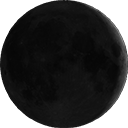Q: Hey there! I ran across your YouTube and decided to look you up on Facebook to see if I could send you a message! So glad to be able to contact you. I’m in a predicament- I am beyond being satisfied with only planetary imaging with my smartphone and am desperate to try to scratch the itch to capture some galaxies, clusters, etc using my 90mm mak cass. I was told several times it couldn’t be done- until I came across your YouTube video you made using your 90 mm (I believe Celestron?) for astrophotography.
I recently purchased a 90 mm 1250/f skywatcher virtuoso with the little electronic keypad. (I’ll attach a photo.) I realize- at the very least- I will need a different mount, dslr and t-ring with adapter (feel free to correct me if I am wrong) however, I feel so dang lost. I’m confused about what to order, and I need to make sure I have my eyes peeled for the correct equipment.
Can you guide me?  any recommendations for a mount, tripod, camera etc that I should buy? I feel hopeful knowing this can probably be done, I know I have a lot to learn and you may be the person to help assist me!!!
any recommendations for a mount, tripod, camera etc that I should buy? I feel hopeful knowing this can probably be done, I know I have a lot to learn and you may be the person to help assist me!!!
Thank you for your time and any guidance you might have!
 A: Well, I can’t pretend that a 90mm Mak is the easiest choice of scope to capture deep sky objects, but I was determined to show that those claiming small Maks were one trick pony’s (planets) were wrong! I apologise in advance if this turns into a sprawling answer, but there are many options you can take. Almost every new piece of kit I’ll mention can be re-used with any future scope, so there aren’t too many wrong purchases to avoid.
A: Well, I can’t pretend that a 90mm Mak is the easiest choice of scope to capture deep sky objects, but I was determined to show that those claiming small Maks were one trick pony’s (planets) were wrong! I apologise in advance if this turns into a sprawling answer, but there are many options you can take. Almost every new piece of kit I’ll mention can be re-used with any future scope, so there aren’t too many wrong purchases to avoid.
OK, caveats done. You mention smartphone shots, by which I guess you have taken “over the eyepiece” with your scope tracking on its mount? The only next step you could take in planetary photography would be to buy a small “astro” CCD camera like a ZWO ASI120. This could then take you down the route of videoing a planet, stacking the video frames and playing with the result using some kind of photo software. I mention that now only because it is probably the thing you could do with the least extra cost from what you have today. But, as you want to go deepsky we can put this idea aside for now. For a DSLR set-up with any scope you need an equatorial mount. If you look to “future proof” your setup then you should look for something in the following class of mount: Skywatcher EQM-35 Pro, (or equivalent Orion mount – are you in the US?), or maybe a Celestron AVX ( a bit old now, lot’s of choice used), or a new Explore Scientific iEXOS-100 (getting good reviews here in the UK). I always advise that you look for opinions in “Cloudy Nights” or “Stargazers Lounge” forums. Get a mount with a tripod rather than buying separately. It’s cheaper.
For the camera, like with most things budget is a big discriminator. I like Canon EOS DSLRs although some swear by Nikons or Sonys. Canons are so widely used that they are a safe bet. You can get many models of EOS new and used, so that’s up to you, but the one piece of advice I will give is make sure the model supports “Live View”, so you can focus the image whilst watching it on a laptop or on the small LCD camera screen. Older EOS’s don’t have Live View.
If you buy used, don’t get one without it! My Canon 700D (not the latest model) does all I need, the newer ones have more pixels in the chip but otherwise the changes are quite small. If you have a laptop then this makes all astrophotography a lot easier. Not 100% essential though. As for general tips for AP, I’d say accurate mount alignment and focusing are the absolute essentials to get right. Without doing these well, everything else is wasted. Checking the first few frames on your laptop is the best way to avoid taking hundreds of blobby or trailing-star frames.
Don’t be disheartened if the Mak results are initially not perfect. A small, long focal length scope is not anybody’s first choice to get into AP, as it has a small field of view and needs accurate tracking. If you complete your new setup and get frustrated with the Mak, swap it out for a small refractor with a good lens (like a WO61/71 for example). Hone your skills and then return to the Mak when you have nailed the dark arts of alignment and focusing. I’ll stop there for now but feel free to ask more questions! Clear skies to you! Graham




